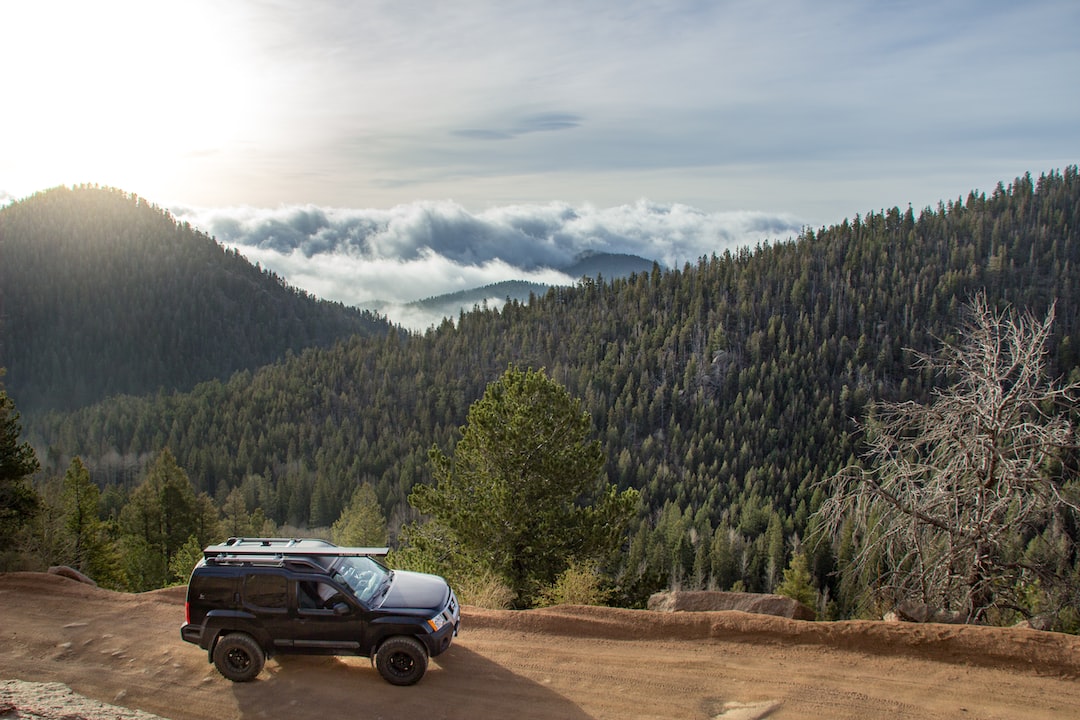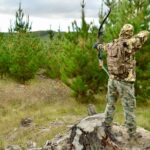Planning a hunting trip can be an overwhelming experience.
Whether you’re new to the sport or an experienced hunter, packing for your excursion and finding potential camp sites are two of the most important steps when it comes to ensuring success in your hunt. But that’s not all.
There is also E-scouting, monitoring daily calorie intake for energy and preparing for unexpected situations during a hunt that should be taken into consideration when planning a hunting trip.
We’ll provide helpful tips on what items to pack, how much food you should bring along with understanding state regulations so that your next adventure goes off without any hiccups.
Packing for a Hunting Trip
When packing for a hunting trip, it’s important to make sure you have all the essentials.
Depending on where you are going and what type of game you plan to hunt, your list may vary slightly. However, there are some items that should be included in every hunter’s pack.
What to Pack:
At the very least, bring a rifle or bow with ammunition/arrows, water bottle or hydration bladder, binoculars or spotting scope, knife/multi-tool, flashlight/headlamp and extra batteries for each device.
Additionally consider bringing an emergency whistle and first aid kit in case of any accidents or injuries while out in the field.
Clothing wise you will want layers appropriate for the climate such as wool socks and base layers made from merino wool which is naturally odor resistant and breathable. Also don’t forget rain gear if necessary.
How Much Food to Bring:
The amount of food needed depends on how long your hunting trip will last but generally speaking aim for about 2-3 meals per day plus snacks throughout the day like trail mix or jerky sticks.
Make sure to include foods that provide energy such as nuts and dried fruit as well as high protein options like tuna packets or peanut butter sandwiches so that you can stay energized during long days spent outdoors.
When packing light, weight is key. Try using smaller containers instead of large ones when possible; this could mean switching from glass jars to plastic bags for storing food items like condiments etc.
Additionally, opt for lighter materials when choosing sleeping bags and pads – synthetic insulation tends to be lighter than down feathers yet still provides good warmth retention properties making them ideal choices for backpacking trips into remote areas where weight matters most.
Lastly, try leaving behind unnecessary items like books and magazines – these add up quickly so only bring what is absolutely essential.
Finding Potential Camp Sites
When planning a hunting trip, it is important to research potential camp sites and identify good locations that meet your needs.
Here are some tips on researching the area, identifying good locations, and understanding local regulations and rules.
Researching the Area:
Before heading out for a hunt, take time to research the area you plan to visit. Look up maps of the region online or purchase topographical maps from a local outdoor store.
Take note of any public land access points as well as private land boundaries so you know where you can legally hunt.
Also check with state wildlife agencies for any additional information about game populations in certain areas or restrictions on specific types of hunting activities.
Identifying Good Locations:
Once you have an idea of what type of terrain or habitat you want to hunt in, start looking for potential camp sites within that area.
Make sure there is plenty of water nearby and enough space for multiple tents if necessary.
If possible try to find campsites near trails or roads so that transportation will be easier when bringing supplies back and forth from town or other destinations during your trip.
Every state has different laws regarding hunting activities such as bag limits, season dates, weapon types allowed etc., so make sure you familiarize yourself with these regulations before going out into the field.
It is also important to understand local customs when camping in certain areas; many rural communities have their own set of unwritten rules regarding noise levels after dark or leaving trash behind at campsites which should be respected while visiting those regions.
Following these guidelines will help ensure everyone has an enjoyable experience while out in nature.
E-Scouting for Successful Hunting Trips
E-scouting is an invaluable tool when planning a successful hunting trip. It allows hunters to research potential areas and gain insight into the local wildlife before ever stepping foot in the field. This guide will discuss the benefits of e-scouting, gathering information on the area, and utilizing technology for scouting purposes.
Benefits of E-Scouting:
By using online resources such as Google Earth or satellite imagery, hunters can get a better understanding of terrain features and vegetation types that may affect their hunt. Additionally, they can use these tools to locate water sources, identify access points to certain areas, and even pinpoint specific animal habitats or trails.
All this information can be used to create detailed maps that are easily accessible from anywhere with an internet connection – allowing hunters to plan ahead without having to physically scout each location beforehand.
Gathering Information on the Area:
In addition to visual data provided by satellite images or aerial photographs, there are also other ways for hunters to gather useful information about their target area prior to arriving at camp.
For example, checking out local forums or websites dedicated specifically towards hunting in your region can provide valuable insights into current conditions as well as tips from experienced locals who know what works best in certain situations.
If you are able to make a scouting trip ahead of your season, throw up a couple of cellular trail cams to keep an eye on things and see whats really living in your spot.
Monitoring Daily Calorie Intake for Energy During a Hunting Trip
Hunting trips can be physically demanding, and it’s important to make sure you have enough energy throughout your journey. Monitoring daily calorie intake is essential for a successful hunting trip. Eating right while hunting will help ensure that you are able to stay active and alert during the hunt.
The first step in monitoring your calorie intake is calculating how many calories you need per day. This depends on factors such as age, gender, height, weight, activity level and other individual needs. Generally speaking, an adult male needs around 2200-3000 calories per day depending on their activity level while an adult female needs around 1800-2400 calories per day depending on her activity level.
Once you know how many calories you need each day it’s time to stock up on nutritious foods before heading out into the wilderness.
Foods like nuts, dried fruits and jerky are great sources of protein and healthy fats that will provide sustained energy throughout the hunt without weighing down your pack too much.
Additionally bringing along some trail mix or granola bars can give you a quick boost of energy when needed without having to stop for a full meal break.
It’s also important to remember that drinking plenty of water is key for staying hydrated during long days in the field which helps maintain proper nutrition levels as well as physical performance levels over time . Be sure to bring along enough water with electrolytes or sports drinks so that dehydration doesn’t become an issue during your hunt Lastly don’t forget about snacks.
Keeping some easy grab snacks like beef jerky or fruit leather handy can help keep hunger at bay between meals so that you’re not tempted by unhealthy options later in the day
By following these tips and monitoring daily calorie intake while hunting, you will be better prepared for whatever comes your way out there in nature.
Stocking up on nutritious foods beforehand, calculating the calories needed per day, and eating right while hunting are all essential components of a successful hunt. Additionally, drinking plenty of water with electrolytes or sports drinks is key for staying hydrated during long days in the field which helps maintain proper nutrition levels as well as physical performance levels over time.
Lastly don’t forget about snacks. Keeping some easy grab snacks like beef jerky or fruit leather handy can help keep hunger at bay between meals so that you’re not tempted by unhealthy options later in the day.
Preparing for Unexpected Situations During a Hunting Trip
When hunting, it is important to be prepared for any unexpected situations that may arise. Knowing what supplies to bring with you on your trip can help ensure that you are ready for anything.
A basic first aid kit should include bandages, gauze pads, antiseptic wipes or cream, and pain relievers. Additionally, a flashlight and extra batteries are essential in case of an emergency at night. It is also helpful to have a pocket knife or multi-tool on hand for any repairs or tasks that need to be done while out in the wilderness.
Being aware of weather conditions before heading out into the field is also key when preparing for unexpected situations during a hunting trip. Checking local forecasts ahead of time will allow you to plan accordingly and dress appropriately depending on the temperature and precipitation levels expected during your hunt.
It’s also wise to pack additional layers just in case temperatures drop unexpectedly or rain starts pouring down from above without warning.
FAQs in Relation to How to Plan a Hunting Trip
How do I plan an out of state hunt?
Planning an out of state hunt requires research and preparation. Start by researching the area you plan to hunt, including local regulations, terrain, wildlife species present, and any other pertinent information. Next, purchase or rent necessary gear such as a hunting license, firearm or bow and arrows if needed.
Make sure to bring appropriate clothing for the weather conditions in the area you are visiting. Finally, make sure your vehicle is prepared for travel with all necessary supplies like food and water in case of emergency.
With these steps taken care of ahead of time you can be confident that your out-of-state hunt will be successful.
How long is the average hunting trip?
The average hunting trip can vary greatly depending on the type of game being hunted, the location, and the hunter’s experience level.
Generally speaking, a typical hunting trip will last anywhere from one day to several weeks. For those looking for a quick hunt, they may choose to stay out in the field for just a few hours or even overnight.
On the other hand, more experienced hunters may opt for longer trips that span multiple days or even weeks as they search for their desired game.
Ultimately, there is no definitive answer when it comes to how long an average hunting trip should be; each individual must decide what works best for them based on their own needs and preferences.
What should a hunting plan include?
A hunting plan should include a thorough assessment of the environment, safety considerations, and an understanding of the game being hunted. It is important to consider the terrain, weather conditions, legal regulations, and local resources when creating a plan.
Additionally, hunters should have appropriate gear for their hunt such as clothing suitable for the climate and season; firearms or archery equipment; optics like binoculars or spotting scopes; navigation tools such as maps or GPS units; food and water supplies; first aid kits; animal calls/scents/lures if applicable; proper licenses/permits where required by law.
By taking these steps into consideration before embarking on a hunt will help ensure that it is successful and enjoyable.
1. Preparation:
Before heading out on a hunting trip, it is important to ensure that you have all the necessary gear and supplies for your hunt. This includes things like ammunition, clothing, food, water, shelter, navigation equipment and other safety items.
Additionally, research should be done ahead of time regarding local regulations and laws as well as the type of game being hunted in order to maximize success.
2. Scouting:
Taking some time to scout an area before actually hunting can help increase chances of success by familiarizing yourself with potential hiding spots or travel routes for game animals.
It also allows you to identify areas where bait or decoys may be used effectively as well as any potential hazards such as terrain features or wildlife interactions that could affect your hunt negatively if not accounted for beforehand.
3. Safety:
Ensuring proper safety measures are taken while hunting is essential in order to prevent accidents from occurring while out in the field.
This includes wearing appropriate clothing (such as blaze orange) when required by law; knowing how to properly handle firearms; understanding basic first aid procedures; having a plan for emergency situations; and making sure someone knows where you will be at all times during your hunt so they can check up on you periodically if needed.
4. Conservation:
Hunting responsibly means taking steps towards preserving wildlife populations through ethical practices such as following bag limits set forth by state agencies and avoiding over harvesting certain species or habitats which can lead to their decline over time if not managed properly.
Additionally, hunters should strive towards leaving behind minimal evidence of their presence after each outing so that future generations may continue enjoying these activities without disruption from human interference .
Conclusion
Make sure to pack what you need for your hunt, find potential camp sites that will suit your needs, use E-scouting to help increase success on your hunt, monitor daily calorie intake for energy during long days of hunting and prepare for unexpected situations.
With these tips in mind you are ready to plan a successful hunting trip.



